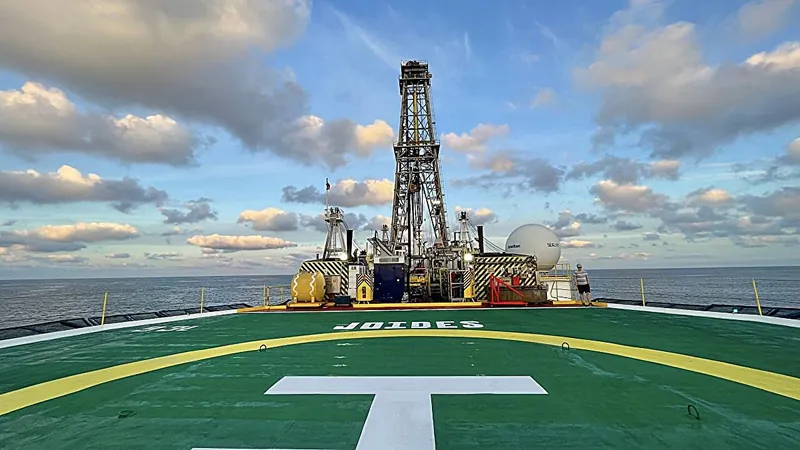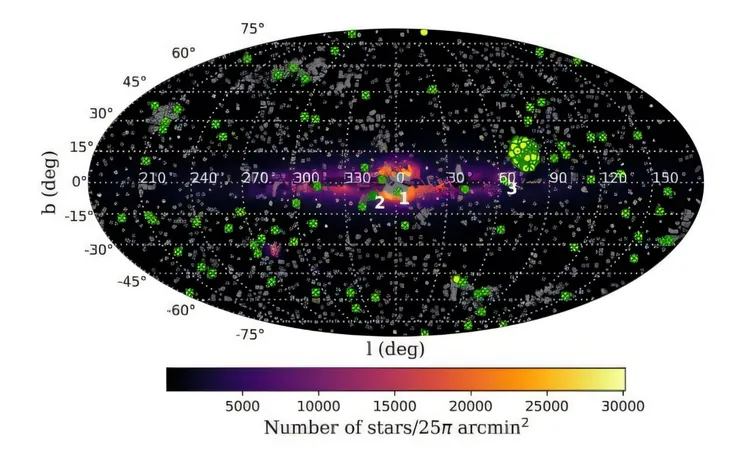
Unraveling the Ice Age Mystery: Astonishing Revelations from the Deep Ocean!
2024-11-08
Author: Emily
Introduction
A groundbreaking new study published in the prestigious journal Science is shaking up established theories about the Earth's ice ages and their intricate relationship with ocean dynamics. This international research team, comprised of scientists from the Woods Hole Oceanographic Institution (WHOI), Lamont-Doherty Earth Observatory, Scripps Institution of Oceanography, and Cardiff University, has uncovered pivotal clues related to the Mid-Pleistocene Transition—a significant climate phase that started around one million years ago.
Historical Context
Historically, many hypotheses regarding the Mid-Pleistocene Transition have tied its origins to a notable weakening of the Atlantic Meridional Overturning Circulation (AMOC). However, this new investigation introduces a more complex role for the deep ocean, suggesting that its effects on climate are not only crucial but also multifaceted.
Research Findings
Using an extensive collection of climate records spanning the last 1.2 million years, the researchers have reconstructed vital deep ocean properties. Their findings indicate that the ocean's ability to sequester carbon dioxide (CO2) plays a critical role in the global climate system. Dr. Sophie Hines, the study's lead author and an Assistant Scientist at WHOI, emphasized the immense storage capacity of the deep ocean in comparison to the atmosphere: "Even a modest change in ocean circulation could significantly impact global climate."
Methodology
The research hinged on sediment core samples collected during the International Ocean Discovery Program (IODP) Expedition 361 off the coast of Cape Town, South Africa. By examining the carbon and oxygen isotopes from fossils of foraminifera, along with neodymium isotopes, the team pieced together essential changes in deep ocean temperature and salinity, alongside the historical mixing of waters from the northern and southern hemispheres.
Key Insights
Co-chief scientist Dr. Sidney Hemming from the Lamont-Doherty Earth Observatory explained, "Crucially, we show that shifts in different deep ocean properties are not always coincident. Our highly resolved multi-proxy record reveals that ice age intensification was primarily influenced by shifts around Antarctica." This finding implies that the expansion of the Antarctic Ice Sheet enhanced the ocean's capacity to store carbon, leading to lower atmospheric CO2 levels and ushering in colder climates and prolonged ice age cycles.
Implications for Modern Climate Change
The implications of this research extend beyond ancient climate patterns. As we face increasingly severe anthropogenic climate change, especially regarding the ongoing reductions in the AMOC, understanding the dynamics of the Southern Ocean is more critical than ever. The region is warming at an alarming pace, and its changes could dramatically affect global ecosystems and weather systems.
Conclusion
Dr. Hines urges for immediate attention: "Our research underscores the intricate relationships between ocean dynamics and climate change. The Southern Ocean is fundamental to unlocking the secrets of our planet's climatic history and addressing future challenges." As the scientific community grapples with these urgent questions, the study opens a new chapter in understanding how deep oceanic processes influence our climate, with potentially dire consequences for the world we live in.









 Brasil (PT)
Brasil (PT)
 Canada (EN)
Canada (EN)
 Chile (ES)
Chile (ES)
 España (ES)
España (ES)
 France (FR)
France (FR)
 Hong Kong (EN)
Hong Kong (EN)
 Italia (IT)
Italia (IT)
 日本 (JA)
日本 (JA)
 Magyarország (HU)
Magyarország (HU)
 Norge (NO)
Norge (NO)
 Polska (PL)
Polska (PL)
 Schweiz (DE)
Schweiz (DE)
 Singapore (EN)
Singapore (EN)
 Sverige (SV)
Sverige (SV)
 Suomi (FI)
Suomi (FI)
 Türkiye (TR)
Türkiye (TR)